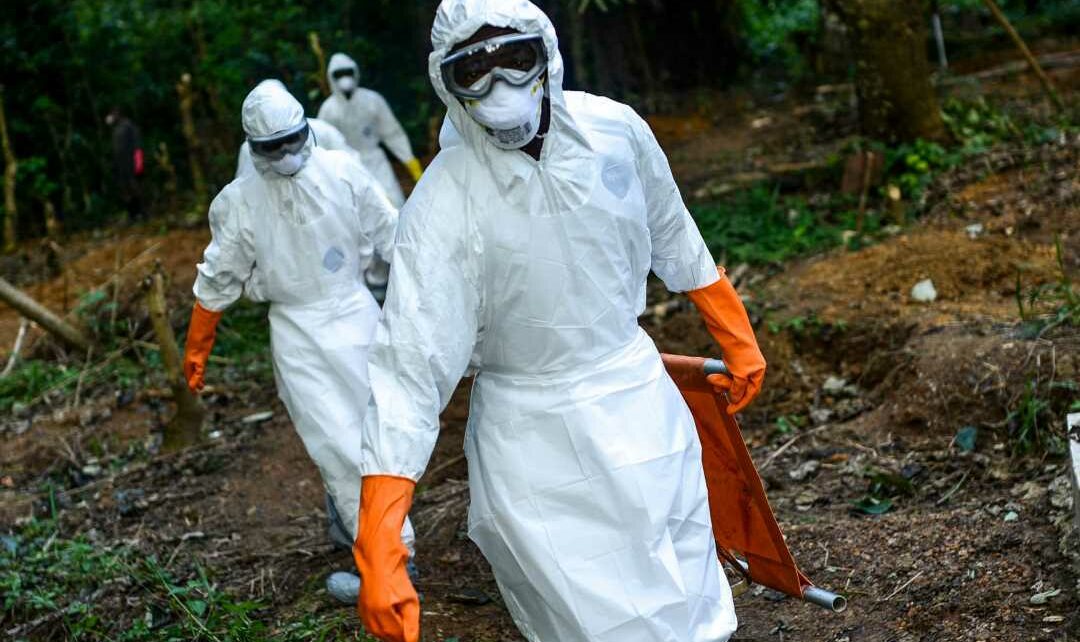WHETHER it begins tomorrow, next month or in the next decade, another pandemic is looming.
Scientists can’t predict precisely when or how the outbreak might start – but they say it's likely to be soon.
Deaths from viruses that currently lurk in animals – half of which can spill into humans – are set to increase 12-fold by 2050, according to a new study published in the British Medical Journal.
Three bugs worrying the US scientists include Ebola and Marburg, SARS, and Nipah virus.
These viruses are on the World Health Organisation's (WHO) list of "priority diseases" that could be the source of the next pandemic.
But the Ebola-like Machupo virus should also be considered a threat, the authors of the new study argue.
Read more on viruses

Scientists discover 8 new viruses that 'could infect humans' on remote island

Next pandemic 'could come from a MILLION unknown viruses – and kill 50m people'
Outbreaks of the four bugs have increased "at an exponential rate" from 1963 to 2019, which the authors found concerning.
We spoke to a health protection expert Professor Paul Hunter, from the University of East Anglia, to learn more about these viral threats and where they could come from.
Ebola and Marburg
Ebola and Marburg are severe and highly infectious filoviruses that come from bats and kill many they infect.
There have been several large outbreaks of both infections in Africa over the last few years, Prof Hunter said, and both have the "potential to spread widely".
Most read in Health

‘Brutal’ virus that ‘lasts for weeks’ and is ‘worse than winter bugs’ sweeps UK

First human case of new swine flu strain found in UK as medics try to stop spread

NHS consultants reach six-figure pay deal that could finally end strikes

Tesco recalls vegetables over fears they’re ‘contaminated’ & ‘unsafe to eat’
However, they generally only spread through fairly close contact, which makes a global outbreak unlikely anytime soon.
"For them to become pandemic, they would need to change their mode of transmission very dramatically," the expert explained.
"The one issue that we have become more aware of in recent years has been sexual transmission, so that could be a problem, especially as the virus can be shed in semen for some time after recovery," he added.
He said that a global outbreak is most likely to occur in Africa, where weak surveillance systems and poor public health infrastructure are in place.
Ebola and Marburg begin abruptly, with high fever, severe headache and malaise.
Many patients develop severe haemorrhagic symptoms, including bleeding from bodily orifices, like the eyes or internal organs.
On average, Ebola kills about 50 per cent of those it sickens, though case fatality rates have ranged from 25 per cent to 90 per cent, according to the WHO.
Marburg also kills around 50 per cent of those it infects, though case fatality rates range from around 24 per cent to 88 per cent, experts say.
SARS
Severe acute respiratory syndrome (SARS) is a viral respiratory caused by the coronavirus, which also caused Covid-19.
Like other respiratory illnesses such as flu and the common cold, SARS affects the airways in the lungs.
Prof Paul said SARS, which is believed to be from bats, is the disease "most likely to cause another pandemic".
This is because it's so contagious.
It's passed on through respiratory droplets produced when a person with the virus coughs or sneezes, or by contact with objects or surfaces containing the virus.
SARS showed how quickly infection can spread during its first reported outbreak in Asia in February 2003.
Over the next few months, the illness reached more than two dozen countries in North America, South America, Europe, and Asia before the SARS global outbreak of 2003 was contained.
Symptoms include a headache, body aches, mild respiratory symptoms, possible diarrhoea, an eventual dry cough, and pneumonia in most.
A total of 8,098 people worldwide became sick, and of these, 774 died.
Scientists say it is highly likely that the virus jumped from bats to cat-like civets before infecting humans.
A spillover could happen again.
The professor said if another SARS outbreak were to emerge, it would likely come from Southeast Asia, where you can find so-called wet markets.
He said: "There are many such viruses in bats, particularly all waiting for their turn in the sun.
"With environmental encroachment in Southeast Asia and the continuing illegal trade in wildlife, it is only a matter of time."
Wet markets are where live animals are traded and come into close contact with one another.
They have been implicated in the outbreak of both SARS and Covid-19.
Nipah
Prof Hunter warned that Nipah, a virus that spreads from fruit bats or livestock, could also be the next pandemic.
The bug – which inspired the blockbuster film Contagion about a global pandemic – attacks the brain, causing it to swell and has a fatality rate up to 75 per cent.
Of those who survive it, around 20 per cent are left with long-term neurological conditions, including personality changes or seizure disorders.
It was first identified in pigs in Malaysia and Singapore in the late 1980s, though it originally came from fruit bats.
"At present, human-to-human transmission is very inefficient but can be spread by close contact," the expert said.
So, there would need to be a major change in the virus for it to become a pandemic.
"However, the thing that worries me is foodborne transmission," he said.
"If infected carcasses are exported internationally, that could cause a pandemic, though a short-lived one."
The virus predominantly affects Bangladesh, where outbreaks occur almost every year.
This year, between January 4 and February 13, a total of 11 cases of Nipah, including eight deaths, were reported in the country.
Other regions at risk of infection include Cambodia, Ghana, Indonesia, Madagascar and Thailand.
Machupo
Also known as “black typhus” and Bolivian hemorrhagic fever, Machupo was first discovered in Bolivia in 1959.
It comes from rodents, specifically a mouse found in Bolivia, which Prof Hunter said could be how it becomes pandemic.
"Human-to-human transmission is thought to be rare, but a pandemic may occur if the virus starts spreading in rodents globally," Prof Hunter said.
The symptoms of which are Ebola-like and include bleeding, high fever, pain, and rapid death.
According to the WHO, Machupo kills between a quarter and a third of those it infects.
So far, outbreaks have only been reported in South America.
Source: Read Full Article


